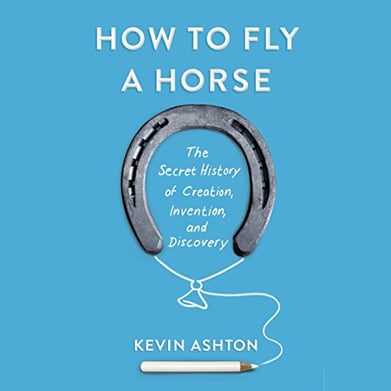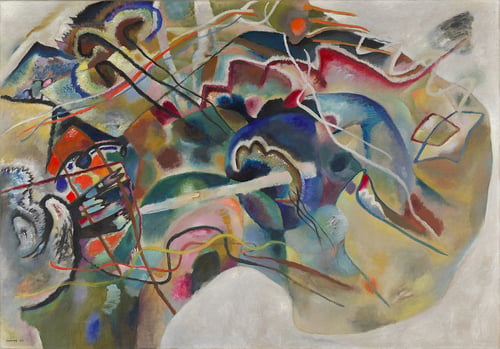How to Fly a Horse, The Secret History of Creation, Invention and Discovery by Kevin Ashton, was published in 2016 and is still fresh today.

Who is Kevin Ashton? He is the person who coined the phrase the “Internet of Things” IoT in 1999 when experimenting with Internet-connected RFID tags on lipstick products for Proctor and Gamble for better inventory management.
Kevin founded the Auto-ID Centre at MIT and founded multiple successful startups in the field.
I loved listening to How to Fly a Horse on Audible, it is extremely well-read by the author. It is entertaining and is an essential read for anyone interested in developing their own potential as well as entrepreneurs and creators in any field of endeavour as it tells the story of human innovation for the past 2000 generations of homo sapiens.
 Contrary to popular myth, great ideas or works of art like Kandinsky's Painting with White Border, don’t make it into the market as products through a flash of inspiration, whereby complete ideas are born whole and simply enacted by their creators. All innovation is built on prior innovation and the trial error and persistence of the creator/s.
Contrary to popular myth, great ideas or works of art like Kandinsky's Painting with White Border, don’t make it into the market as products through a flash of inspiration, whereby complete ideas are born whole and simply enacted by their creators. All innovation is built on prior innovation and the trial error and persistence of the creator/s.
What comes through in the numerous captivating stories in the book is the time and dedication successful creators required to bring ideas to life and the focus and determination to learn from experimenting and failing and continuing until a breakthrough is achieved.
James Dyson’s story is riveting. He was personally frustrated that as his Hoover vacuum cleaner bag filled up and its pores became clogged with dust, it lost suction. When driving past a sawmill, he saw a 30-foot cyclone separator that removed sawdust from air using centrifugal force. More than 5000 iterations in design and prototyping later, the Dyson DC-01 cyclone vacuum was perfected and it changed vacuum cleaner design forever. Getting the innovation to market and becoming a household brand is another story and he nearly went bankrupt doing it. Today his net worth is estimated at $26 billion.
.jpg?width=279&height=357&name=Rosalind_Franklin_(1920-1958).jpg) I found Rosalind Franklin’s story particularly moving. She earned a PhD from Cambridge and was an X-Ray Crystallographer, one of the few careers in science open to women when she began her research. Ashton traces the origins of prior innovation that led Franklin to discover and capture the first image, photo 51 of the double helix of DNA in 1952 while at Kings College in London. Unfortunately, without Franklin’s knowledge, her collaborator, Wilkins showed the photograph to Watson and Crick who were also working on a chemical model of DNA, and they published their work on DNA in 1953. In 1962, Watson, Crick and Wilkins were awarded the Nobel Prize for Physiology or Medicine, four years after Franklin’s death.
I found Rosalind Franklin’s story particularly moving. She earned a PhD from Cambridge and was an X-Ray Crystallographer, one of the few careers in science open to women when she began her research. Ashton traces the origins of prior innovation that led Franklin to discover and capture the first image, photo 51 of the double helix of DNA in 1952 while at Kings College in London. Unfortunately, without Franklin’s knowledge, her collaborator, Wilkins showed the photograph to Watson and Crick who were also working on a chemical model of DNA, and they published their work on DNA in 1953. In 1962, Watson, Crick and Wilkins were awarded the Nobel Prize for Physiology or Medicine, four years after Franklin’s death.
Not everyone is a Rosalind Franklin or James Dyson, but the core idea in the book is that everyone is capable of being creative, it is an essential human trait, and creation is essential to our survival as a species. What prevents most people from creating, be it a new blog article, a new song, a new recipe, a new drug, or a new cybersecurity approach is the fact that they don’t get started. Or, if they do get started, they give up at the first hurdle.
A riveting and scholarly book that will reward the reader with a huge dividend for the time to read it. Highly recommended!